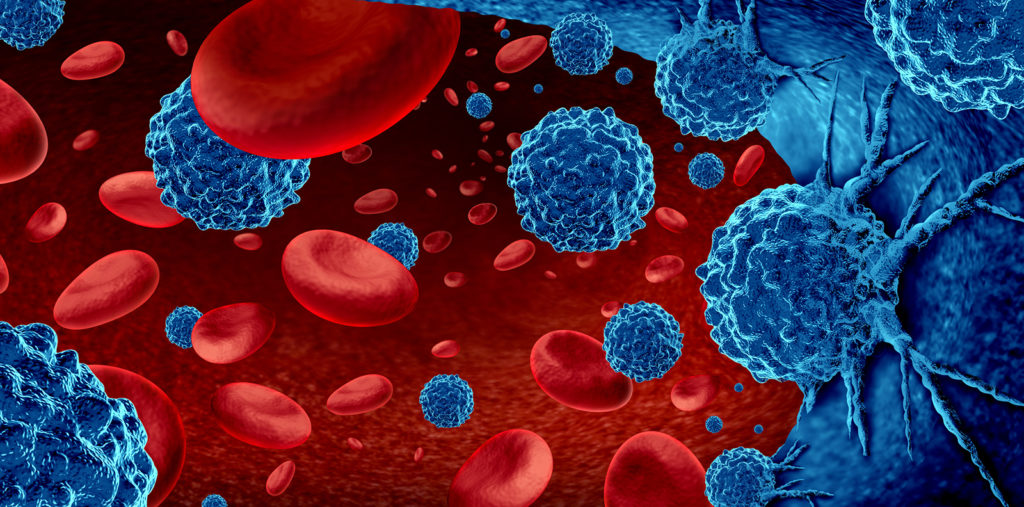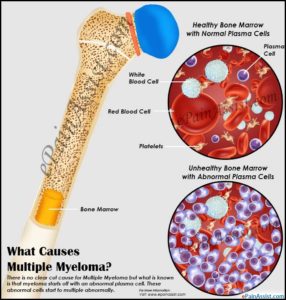
Diagnosed with SMM, SPB, or MGUS?
Learn how you can stall the development of full-blown Multiple Myeloma with evidence-based nutritional and supplementation therapies.
Click the orange button to the right to learn more.
- You are here:
- Home »
- Blog »
- Pre-Myeloma »
- Smoldering Multiple Myeloma- First Steps?
Smoldering Multiple Myeloma- First Steps?

“We’ve seen data before by the Mayo Clinic and the University of North Carolina showing that multiple myeloma patients who are seen by a myeloma specialist live longer…”
Hi David- I was just diagnosed tentatively with Smoldering Multiple Myeloma (SMM) two weeks ago, sadly a week after my father passed away from Multiple Myeloma. I am 54, exercise 5 times a week, vegetarian, outdoor enthusiast, non smoker and rarely drink alcohol.
My first bone scan is June 7th and my doctor is referring me to Sloan Kettering. I am meditating, trying to eat 90 % organic and plant-based. I would appreciate any thoughts and recommendations on my situation and supplements etc
Thank you for your time and keep on with a healthy life my friend! 💪🏼 Katherine
Hi Katherine-
- Research has shown that there can be a genetic predisposition to multiple myeloma. I will link a study below.
- I agree that you should develop a working relationship with a MM specialist. Memorial Sloan Kettering has several. Newly diagnosed patients who work with MM specialists rather than general oncologists or even hematologists, according to research, live longer on average. MM specialists simply know more about MM than general oncs. do. See below.
- Pesticides have been shown to increase the risk of Multiple Myeloma. Organic produce will reduce the pesticides that you ingest.
- Please keep in mind that smoldering multiple myeloma is not cancer. Conventional oncology considers SMM to be a “blood disorder.” No therapies have been developed and approved for SMM by the Food and Drug Administration.
- It is probable that a MM specialist at MSK will encourage you to participate in a clinical trial to evaluate a chemotherapy or chemo cocktail in hopes of prolonging your time to a full multiple myeloma diagnosis. Of the many clinical trials studying therapies for pre-myeloma patients like you, I have never read of a therapy that has been shown to prolong overall survival (OS). OS is length of life.
- MM Survivor
- MM Cancer Coach
- Director PeopleBeatingCancer
Genetic predisposition for multiple myeloma
“Multiple myeloma (MM) is the second most common blood malignancy. Epidemiological family studies going back to the 1920s have provided evidence for familial aggregation, suggesting a subset of cases have an inherited genetic background.
Recently, studies aimed at explaining this phenomenon have begun to provide direct evidence for genetic predisposition to MM. Genome-wide association studies have identified common risk alleles at 24 independent loci.
Sequencing studies of familial cases and kindreds have begun to identify promising candidate genes where variants with strong effects on MM risk might reside. Finally, functional studies are starting to give insight into how identified risk alleles promote the development of MM. Here, we review recent findings in MM predisposition field, and highlight open questions and future directions.”
Live Longer with Multiple Myeloma Because You See a Myeloma Specialist
“We’ve seen data before by the Mayo Clinic and the University of North Carolina showing that multiple myeloma patients who are seen by a myeloma specialist live longer. A new, recent study supports these findings.
A state cancer registry linked to public and private insurance claims was used to identify 1029 myeloma patients from 2006 – 2012. The study evaluated the difference in overall survival between:
- NCI-designated cancer centers
- Primary oncologists’ volume of patients with myeloma
- Patient sharing between local oncologists and myeloma specialists
The study found that:
- Patients treated at an NCI Cancer Center lived longer than those who did not.
- Patients treated at an NCI Cancer Center lived longer than those treated by low-volume and high-volume community providers.
- No difference was seen between treatment by myeloma specialists and the highest-volume community oncologists in the ninth and tenth deciles (eg. the same approximate number of patients seen by the NCI Cancer Centers).
- Patients treated by community oncologists had a higher risk of death regardless of patient-sharing with myeloma specialists, compared to those only treated by myeloma specialists…”
Pesticide exposures and the risk of multiple myeloma in men: An analysis of the North American Pooled Project
“Multiple myeloma (MM) has been consistently linked with agricultural activities, including farming and pesticide exposures. Three case-control studies in the United States and Canada were pooled to create the North American Pooled Project (NAPP) to investigate associations between pesticide use and haematological cancer risk.
This analysis used data from 547 MM cases and 2700 controls. Pesticide use was evaluated as follows: ever/never use; duration of use (years); and cumulative lifetime-days (LD) (days/year handled × years of use). Odds ratios (ORs) and 95% confidence intervals (CIs) were estimated using logistic regression adjusted for age, province/state of residence, use of proxy respondents and selected medical conditions. Increased MM risk was observed for ever use of carbaryl (OR = 2.02, 95% CI = 1.28-3.21), captan (OR = 1.98, 95% CI = 1.04-3.77) and DDT (OR = 1.44, 95% CI = 1.05-1.97). Using the Canadian subset of NAPP data, we observed a more than threefold increase in MM risk (OR = 3.18, 95% CI = 1.40-7.23) for ≤10 cumulative LD of carbaryl use.
The association was attenuated but remained significant for >10 LD of carbaryl use (OR = 2.44; 95% CI = 1.05-5.64; ptrend = 0.01). For captan, ≤17.5 LD of exposure was also associated with a more than threefold increase in risk (OR = 3.52, 95% CI = 1.32-9.34), but this association was attenuated in the highest exposure category of >17.5 LD (OR = 2.29, 95% CI = 0.81-6.43; ptrend = 0.01). An increasing trend (ptrend = 0.04) was observed for LD of DDT use (LD > 22; OR = 1.92, 95% CI = 0.95-3.88). In this large North American study of MM and pesticide use, we observed significant increases in MM risk for use of carbaryl, captan and DDT.”
Organic farming uses fewer pesticides, reduces dietary exposure on produce
“In contrast to conventional farming, organic farming relies more on natural processes than chemicals to manage and prevent pests and diseases. A new study published in the journal Agronomy(link is external) shows that this difference in management significantly reduces risks of dietary and environmental exposure to toxic chemicals, and transitioning merely 1.2% of cropland used to grow fruits and vegetables to organic production is needed to make an impact on dietary exposure to harmful pesticides.
The study paired the most detailed pesticide use database in the U.S., the California Pesticide Use Reporting (PUR) system, with the national-level pesticide use data collected from USDA to quantify pesticides used in conventional versus organic production of row crops, tomatoes, carrots, and grapes. The study also estimated pesticide residues and risks of dietary exposure to pesticides on 21 fruit and vegetable crops, and compared these risks in organic versus conventional for 10 fruit and vegetable crops.”


